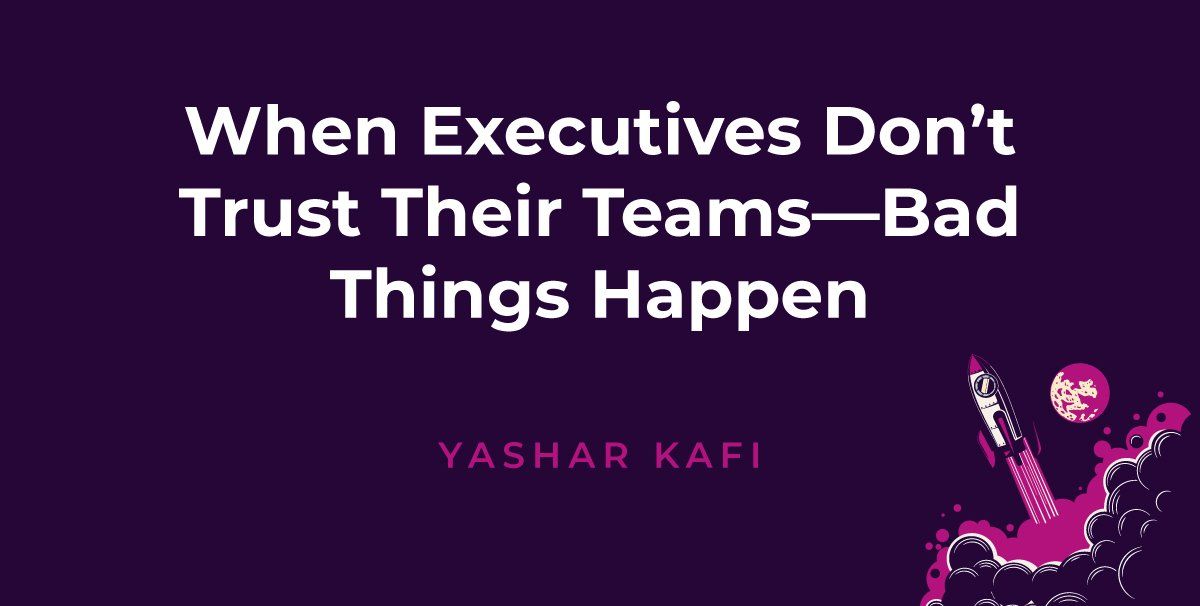When Executives Don’t Trust Their Teams—Bad Things Happen
Let’s talk about trust. In particular, how important it is for executives to be able to trust their teams. And when I say trust, I mean to place confidence in—and provide autonomy for—your team to define and ultimately execute a strategy.
Having trust in your team is essential for an executive for many reasons, and I am not the only one who knows it. Here’s what some of the top players in the industry have to say on the subject:
Stephen R. Covey, who wrote The 7 Habits of Highly Effective People, points out how trust is essential for true collaboration: “Without trust, we don’t truly collaborate; we merely coordinate or, at best, cooperate. It is trust that transforms a group of people into a team.”
Without Trust, There is No Relationship
An executive who feels like they can’t trust their team tends to alienate them. They either take on far too much responsibility alone due to lacking confidence in the team, OR they will delegate tasks only to end up micromanaging everything. This ruins the effort entirely.
Brian Tracy, Chairman and CEO of Brian Tracy International, even goes a step further and equates trust as the critical component upon which everything else depends. In his words, “The glue that holds all relationships together—including the relationship between the leader and the led—is trust, and trust is based on integrity.”
Trust goes both ways, of course. If a team cannot trust their leader, they tend to hold back and not go out on a limb and bring forth innovative ideas or do anything beyond the status quo. After all, why would they? And likewise, when the executive does not trust their team enough to let go and let them take the lead in ways that align with their strengths, they feel a lack of trust. They respond by (again) holding back. They sense the executive is not invested in their input, so they think: “Why bother?” Can you blame them?
Trust Leads to Innovation
Business consultant David Armistead shared the opposite side of the coin, speaking of the fantastic possibilities having trust in your team unleashes. “When the trust level gets high Commented [MB1]: If too long this part could be removed. enough, people transcend apparent limits, discovering new and awesome abilities of which they were previously unaware.” When an executive trusts their team, the team feels it, and they respond—and flourish—in that environment.
The author mentioned above, Steven R. Covey, agrees, explaining, “When the trust account is high, communication is easy, instant, and effective.” Trust is not only the foundation that a solid collaborative team is built upon, but it is also the grease that keeps each part of the collective machine purring and functioning at peak performance.
So, my question now is: As an executive, do you trust your team to perform and contribute—to define and execute a strategy from point A to Z? If not, there is a huge problem that needs to be addressed. Either you need to revamp your work roster and hire employees you can trust— or you need to take a long, hard look at yourself. You may need to address your inability to let go of some of the control and micromanaging tendencies preventing you from letting your team have the freedom and autonomy (and trust from you) that they need to flourish.
When it all comes down to it, a lack of trust in the workplace on any level is a toxic disease. And as the leader, the remedy always starts with you.




